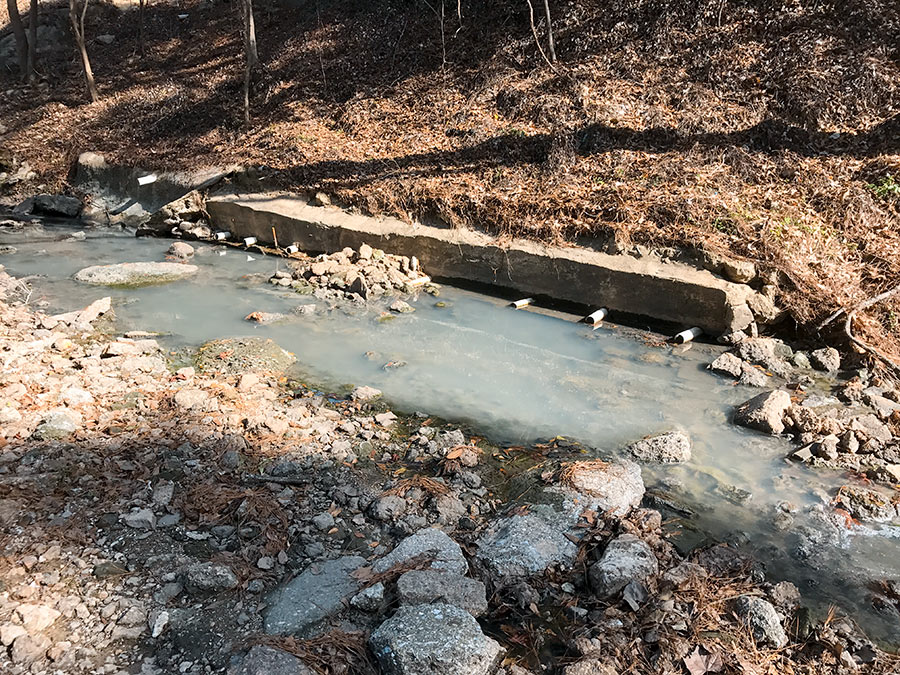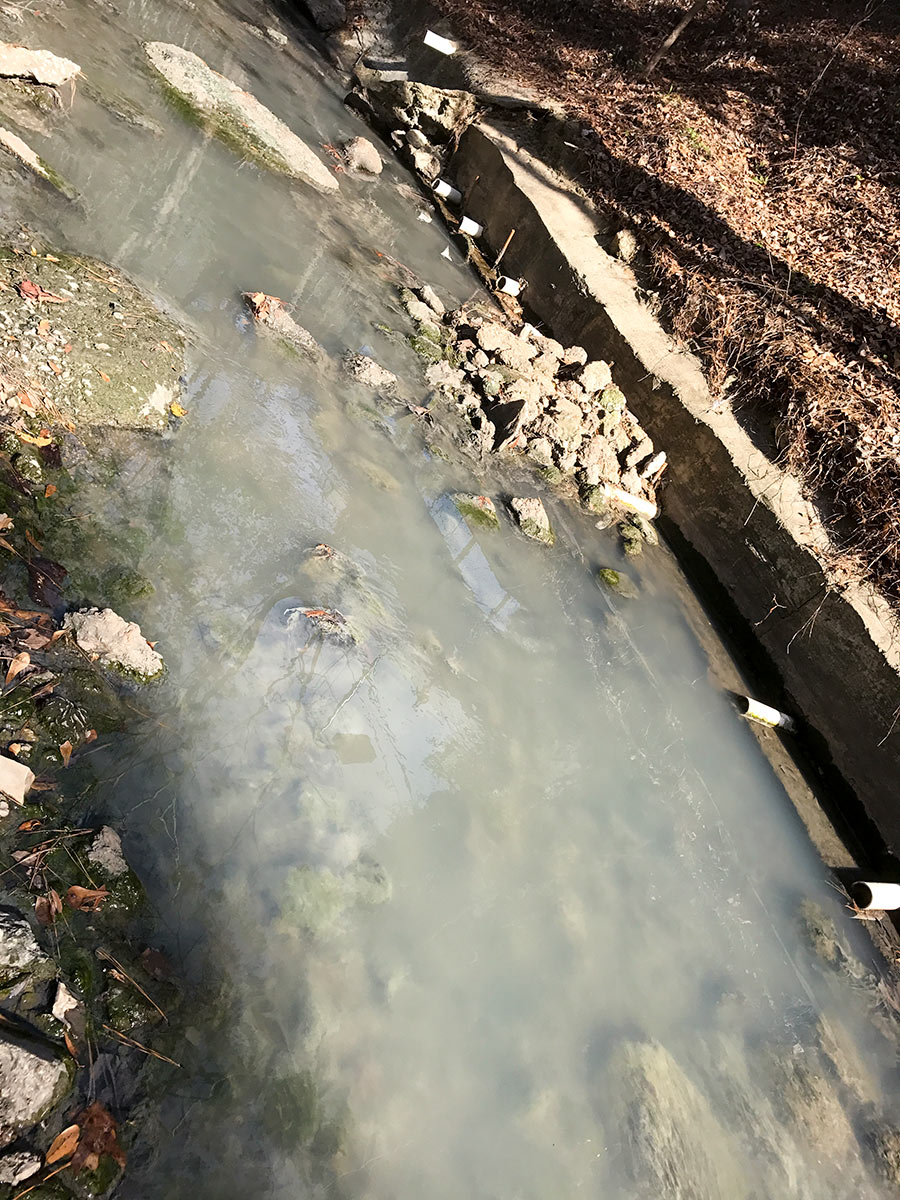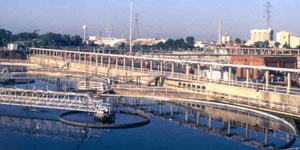

Here’s the pungent wastewater that’s been flowing through a Swamplot reader’s backyard on Stoney Creek Dr. for just over a month, according to the homeowner. The waterway pictured above — dubbed Ditch #W-151 by Harris County Flood Control — parallels Gessner on its way south from Memorial City Mall, passing through portions of Bunker Hill Village and Whispering Oaks before emptying into Buffalo Bayou. For about 3 quarters of a mile along that stretch, the ditch cuts through the backyards of homes on Stoney Creek, where owners have complained about this and similar movements in the past.
Residents suspect the issue might have to do with the sewer repair work now underway at multiple sites upstream from their neighborhood. The photo below shows a temporary pump conducting liquids across Plantation Rd., just south of Memorial City Mall’s frontage along Barryknoll:


 Yesterday’s floodwater caused diluted sewage releases from the 69th St. Wastewater Treatment Plant, located near the crossing of 69th St. over Buffalo Bayou (just upstream from the new
Yesterday’s floodwater caused diluted sewage releases from the 69th St. Wastewater Treatment Plant, located near the crossing of 69th St. over Buffalo Bayou (just upstream from the new  “Resources should be allocated based on ‘worst first’. It’s very likely that areas of wealth are also areas of redevelopment and thus, improvement — whereas poorer areas are stagnant and don’t get the same type of improvement because there is no investment out there. I know when I’ve tried to invest in a rough area, the city shit on my face. So I’ve backed down quite a bit. My guess is that people smarter than me stopped well before I did.” [
“Resources should be allocated based on ‘worst first’. It’s very likely that areas of wealth are also areas of redevelopment and thus, improvement — whereas poorer areas are stagnant and don’t get the same type of improvement because there is no investment out there. I know when I’ve tried to invest in a rough area, the city shit on my face. So I’ve backed down quite a bit. My guess is that people smarter than me stopped well before I did.” [